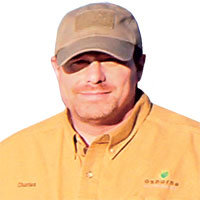Ant management is good business all throughout the country, say respondents to PMP’s exclusive survey.
Ants are problematic throughout the United States. It doesn’t matter whether you’re a pest management professional (PMP) working in the South, West or Northeast; you’re going to receive calls to manage ants, according to Pest Management Professional’s (PMP’s) 2017 Ant Management Survey.
Most of those jobs are going to be for homeowners, as survey respondents said more than 50 percent of their ant management revenue comes from the residential sector. The commercial and government/municipal sectors account for less than 25 percent of ant management revenue for the majority of those polled.
Callbacks trailing from ant management jobs don’t appear to be an issue for most because the majority of those asked said callbacks occur less than 5 percent of the time.
Carpenter ants (Camponotus spp.) are the most problematic species. Once again, they earned the top spots on our lists ranking ants that cause the most callbacks and generate the most revenue. (Editor’s Note: For more about carpenter ants, check out Dr. Laurel Hansen’s three recommendations for a more effective ant management strategy.) No wonder carpenter ants are at the top of the list: They can be tricky to manage. One key is finding their nests, but that isn’t always easy because their nests can be indoors or outdoors.
Doug Foster, president of Burt’s Termite & Pest Control in Columbus, Ind., faced a particularly challenging ant management job. At first, Foster figured the carpenter ants that kept appearing in a customer’s bathroom were coming from a nearby tree. He treated outside, but that didn’t help. Then he treated inside, around the windowsills and shower, but that didn’t work either.
“In utter frustration, I sat down on the floor and waited,” he says. “After about 10 minutes, I saw a lone ant coming from under the door and thought it must be coming from down the hallway.”
But Foster saw nothing in the hallway. It wasn’t until he moved the bathroom door that he spotted sawdust on the floor. He removed the door, flipped it over, saw the opening on the underside, and treated for the ants. For Foster, this experience emphasizes the importance of taking one’s time, a lesson stressed in his company training meetings.
Location, location, location
With ants, determining the location of the colony is critical. Darin Huffaker, president of Responsible Pest Control in Tempe, Ariz., says treating only inside often won’t eliminate the ants seen there because ants that enter a home usually come from a colony located outside.
“Effective ant control can be tricky and time-consuming,” Huffaker says. “Technicians who fail to eliminate the ant source — meaning the colony — will end up with frustrated customers as ants come marching one by one right back inside, which is precisely why a thorough inspection is so important when managing ants.”
Combating ants can be difficult at times because their nesting sites can be hidden in wall voids and other inaccessible areas. So the best tool PMPs have in their toolbox is a great inspection, says Joe Summers, owner of Coastal Pest Management in Cypress, Texas.
“Taking your time with a detailed inspection of the interior and exterior of a structure, followed by a targeted treatment to the trailing ants and nesting sites, will give you the best chance of success when battling any ant species,” Summers says.
Brian Smith, ACE, owner of Smith’s Environmental Service in Tyler, Texas, knows this advice from experience. A longtime customer called complaining of ants after a shipment of St. Augustine grass was delivered to her home. Smith carefully identified the species as pyramid ants (Dorymyrmex spp.) and treated the structure and newly sodded yard. What he failed to treat, however, were the client’s concrete pots that contained perennials and annuals. Sure enough, a week later, the customer called to say the ants were still in the sod and driveway.
“The technician didn’t move the pots to spray underneath them because they were so heavy,” Smith says. “Upon reinspection, I moved several of the large pots and discovered colonies in the soil underneath them.”
Persistence pays off
Experienced PMPs know tracking down ants requires persistence. In San Antonio, Texas, Warren Remmey, ACE, president of Spider Man Pest Control, was faced with an ant infestation in the fifth-floor break room of an eight-story building. When a perimeter inspection revealed nothing, he spoke with all the employees to learn where and when the ant sightings occurred. An inspection of the desk of a worker who snacked on candy led nowhere, as did inspections of the basement, pipe chase and elevator shaft. But once Remmey headed back outside, he spotted a trail of tawny crazy ants (Nylanderia fulva) heading up and down a wall, across the sidewalk and disappearing into a crack in the curb. A few steps away, they reappeared, crossed back over the sidewalk and trailed to a dumpster.
“Now, all the pieces of this puzzle were coming together,” he says. “I had building maintenance step up sanitation; we performed the proper treatments; and the customer became a great, longtime account.”
Learn by reading, doing
Education goes a long way when managing ants. Charles Osborne, ACE, owner of Osborne Pest Management in Colorado Springs, Colo., taught himself how to identify and treat ants when he started in the pest management industry. Osborne studied by reading books and expert advice in magazines such as PMP. He also collected ants from the accounts he serviced so he could study them under a microscope and compare their differences.
“I’d put into practice what I read,” he says. “I’d find out what worked and what didn’t work in my area,” he says. “With this information, I was able to provide a better service for the customer by eliminating the colony, instead of using the wrong treatment and making them spread.”
Follow-up makes the difference
Knowing ant species and the proper way to treat them is only half the battle. Roger Burgess, owner of Atlanta-based Burco Services, says follow-up is imperative when treating pests.
While battling Argentine ants (Linepithema humile) in a multibuilding housing complex, Burgess realized the structures looked the same but weren’t built the same. Ants were entering some of the structures through cracked expansion joints in the slab homes. Because not all the buildings in the complex had structural problems, many buildings showed no sign of ants. Looking at the construction of the building from all angles allowed for effective management.
Because the entry points were hidden, follow-up was a must. Burgess and his technicians returned twice a week after first treating the infested areas.
“Callbacks were at 250 units per weekly visit when we took over the complex,” he says. “By the end of the first month, it was down to 75. By the end of the second month, it was down to 45. By the end of the first quarter of service, it was reduced to 12 calls monthly, not weekly.”
Burgess explained the importance of integrated pest management (IPM) to the managers of the complex, who, in turn, required tenants to comply with the pest management service protocol.
Customer cooperation, communication
Cooperative customers make a big difference in effective treatment. Derby Schafer, owner of A Access Denied Pest Control in Las Vegas, says PMPs can’t perform service correctly or effectively when customers are filthy and refuse to change housekeeping habits.
“We personally show homeowners what needs to be done in terms of the cleaning and preparation work that will ensure a legal and safe treatment,” he says.
Typically, Schafer won’t provide service to customers who don’t follow through.
“If they insist on service, we make sure to document that future callbacks due to lack of cooperation aren’t covered for free,” he says.
When servicing multifamily structures, sometimes written documentation isn’t enough, especially if a problem becomes a legal issue. Photographs and the help of a property management representative might be needed in these situations. Honest communication with customers often fosters a long-lasting relationship. Joe Carrillo, owner of Hill Country Pest Control in Dripping Springs, Texas, makes a point to answer a customer’s questions about identification, biology and treatment methods.
“Being able to communicate and educate the client is a must if your company is going to survive,” Carrillo says. “It’s important to let the client know about and understand the procedures being done in their home.”
PMPs should let their customers know they’re there to help them understand their pest problems.
Business basics
The key to ant management is simple, says Steve Fisher, president of Fisher Pest Management in Veneta, Ore.
“Don’t make excuses, keep a smile on your face, and work your (expletive) off until you’ve solved the problem,” Fisher says. “Then thank your customers for the opportunity to serve them.”
PMPs must have strong ethics, as well as a commitment to themselves, their companies and their customers, Fisher says. They must be well trained, licensed, motivated and supported by their employers. Standards like these apply no matter where ant management is needed.
Managing Editor Diane Sofranec can be reached at dsofranec@northcoastmedia.net or 216-706-3793.










Leave A Comment